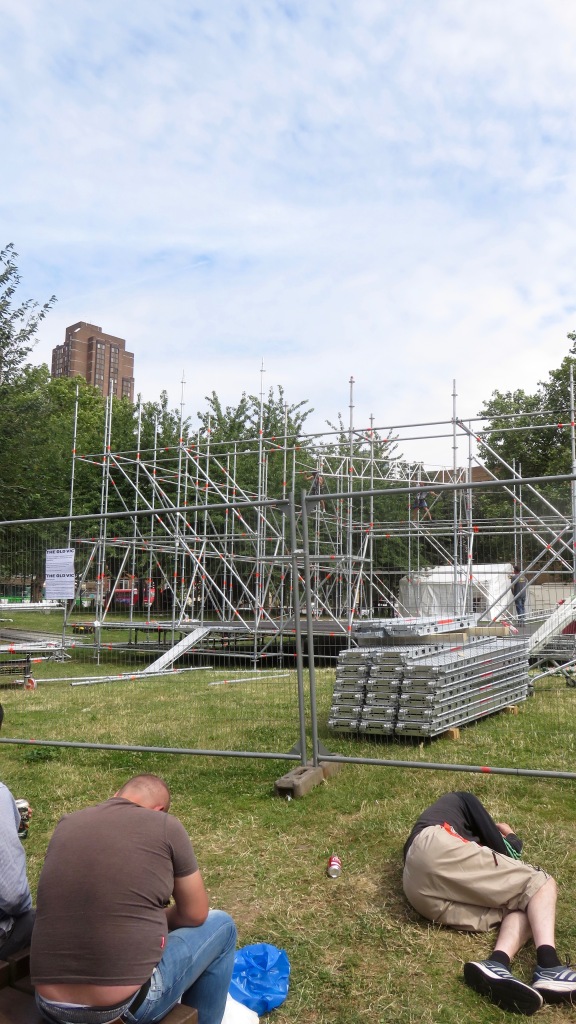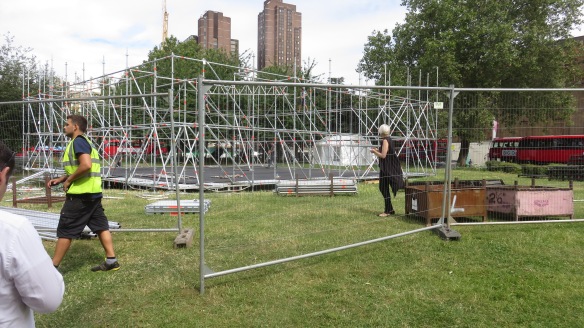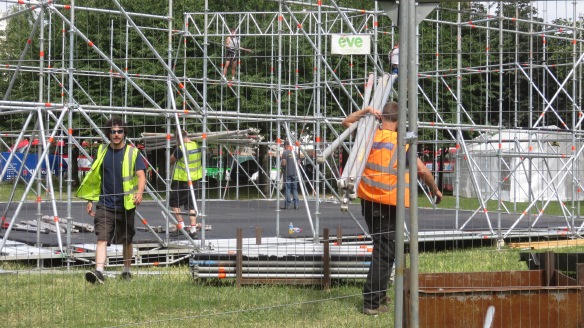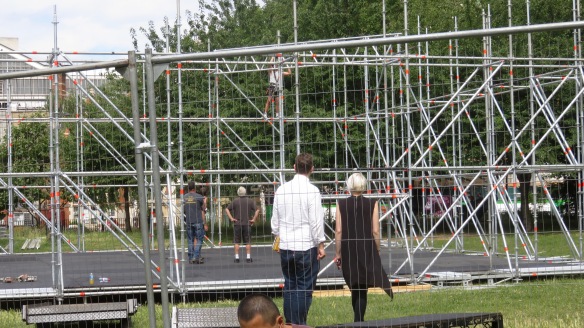CLICK ON IMAGES TO ENLARGE. REPEAT IF REQUIRED.
I made my usual journey by train to London Waterloo for a lunch date with Norman at Tas. Jackie drove me to New Milton for the outward trip, and collected me from Brockenhurst for the return.
On a very crowded train I sat with a mother and her three children. The eldest two had their own seats and a little girl sat on her mother’s lap. The woman decided to make room for one of the standing passengers. With great effort, and mild protestations from her small son, she placed the two youngest on her lap on the window seat, leaving the aisle one vacant. She then gesticulated to indicate that the seat was free. There were no takers. It was half an hour before the little girl slid off her mother’s knee into the seat.
I took the Millennium Green route to The Cut from Waterloo Station. This involves walking down steps to the street below.
Buddleias are known as the Butterfly plant because they attract those insects. I call them the Railway Line plant because they invade every aspect of our railways. Here they festoon the wall alongside the approach road.
My reward for choosing to walk through the green was meeting Caggie
who was posting signs explaining the scaffolding that was going on.
Who’s that getting into shot? Ah! It’s Caggie.
Normal life continued around the perimeter of the gardens,
while a team of strong young men set about erecting the frame for the temporary theatre.
I wondered whether passengers on The London Eye would be able to see this activity.
Caggie was certainly keeping a close eye on it.
The staff were positively bustling.
There she is again,
doing the tour.
This fun young woman gave me permission to photograph what I liked. Thank you, Caggie.
At Tas Turkish restaurant, Norman I enjoyed each other’s company as usual. My meal was haddock in a very tasty stew with salad, followed by a piquant cold rice pudding dish. We shared the house red wine, as is our custom.
I dozed away most of my return journey.






















